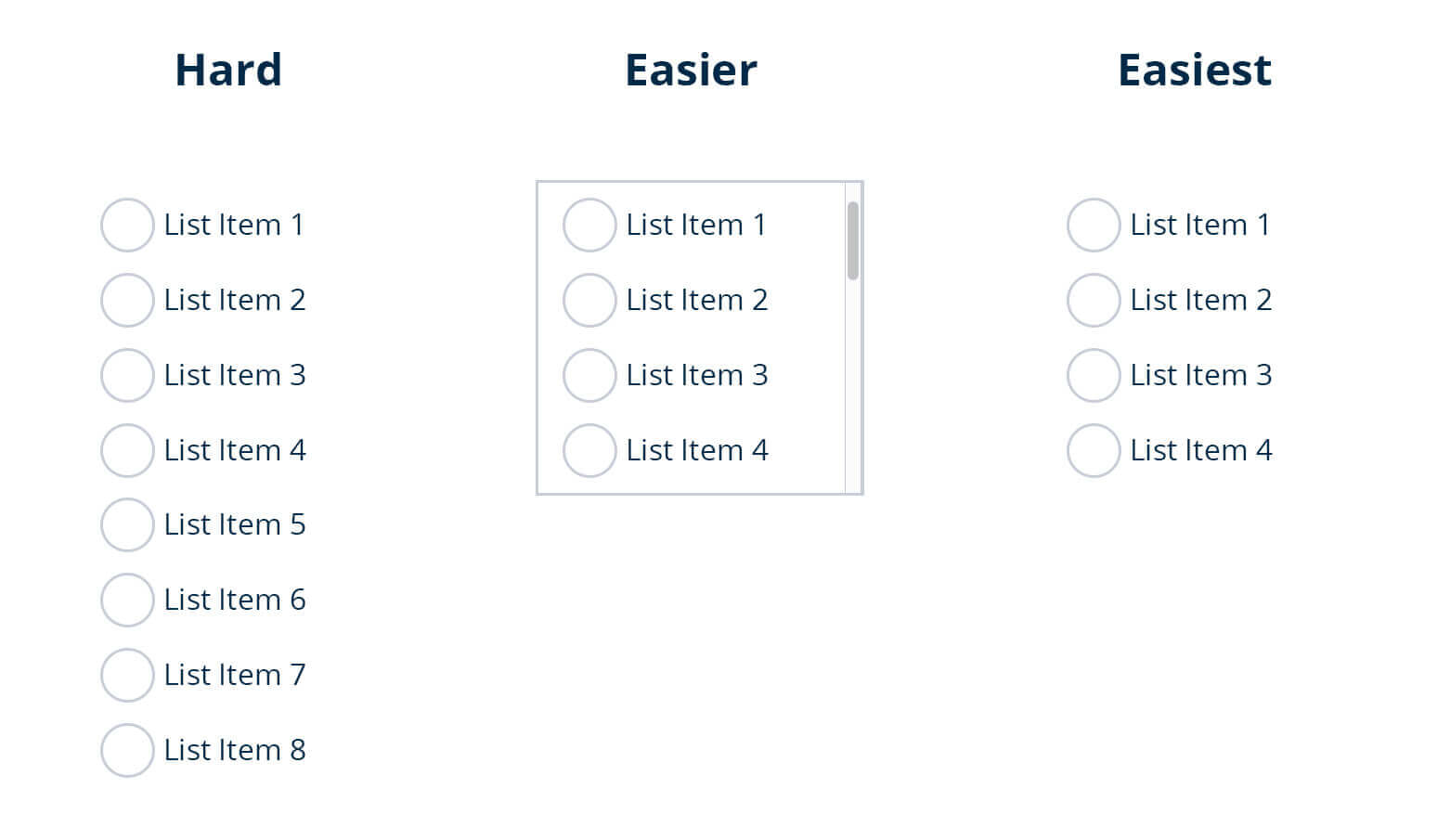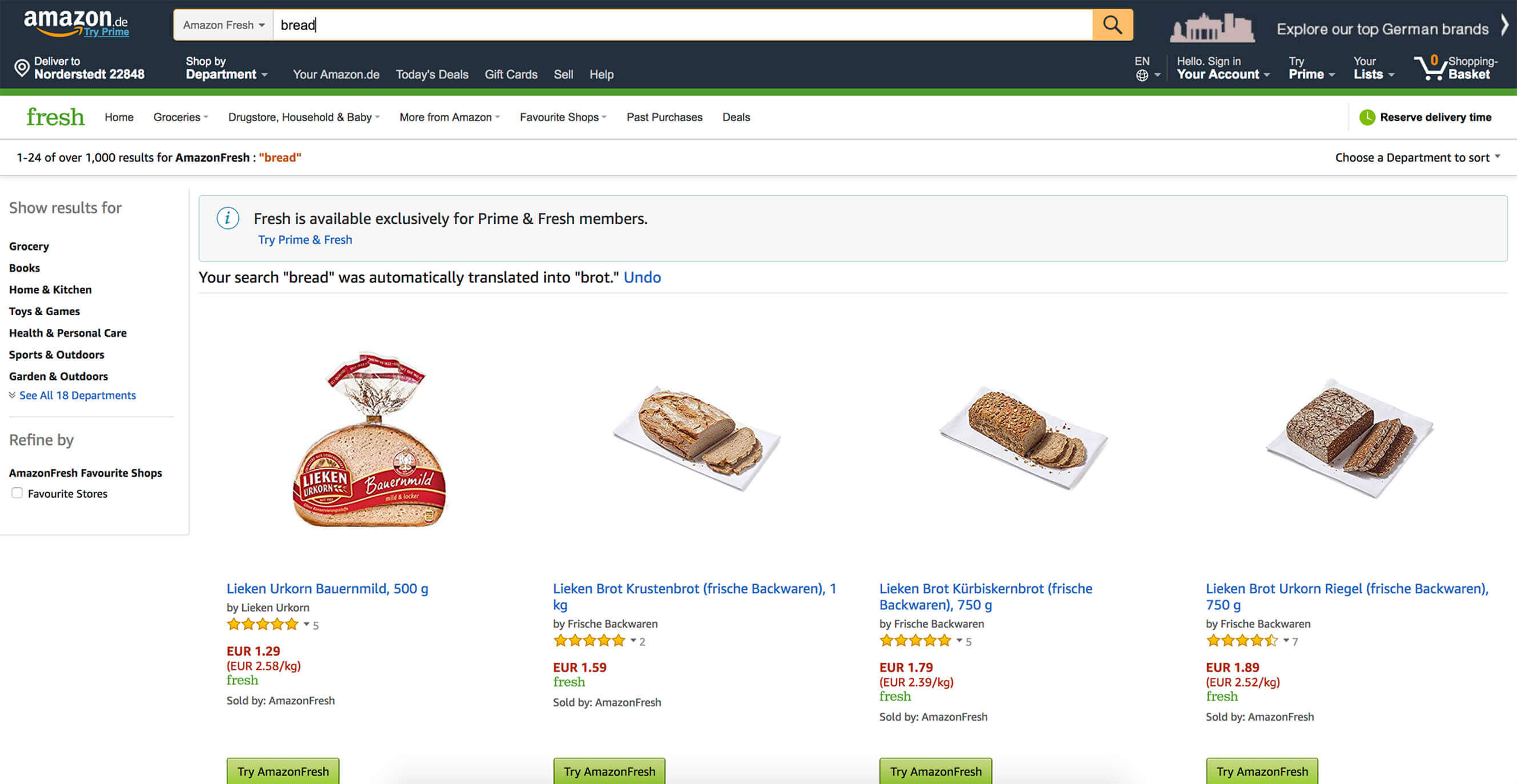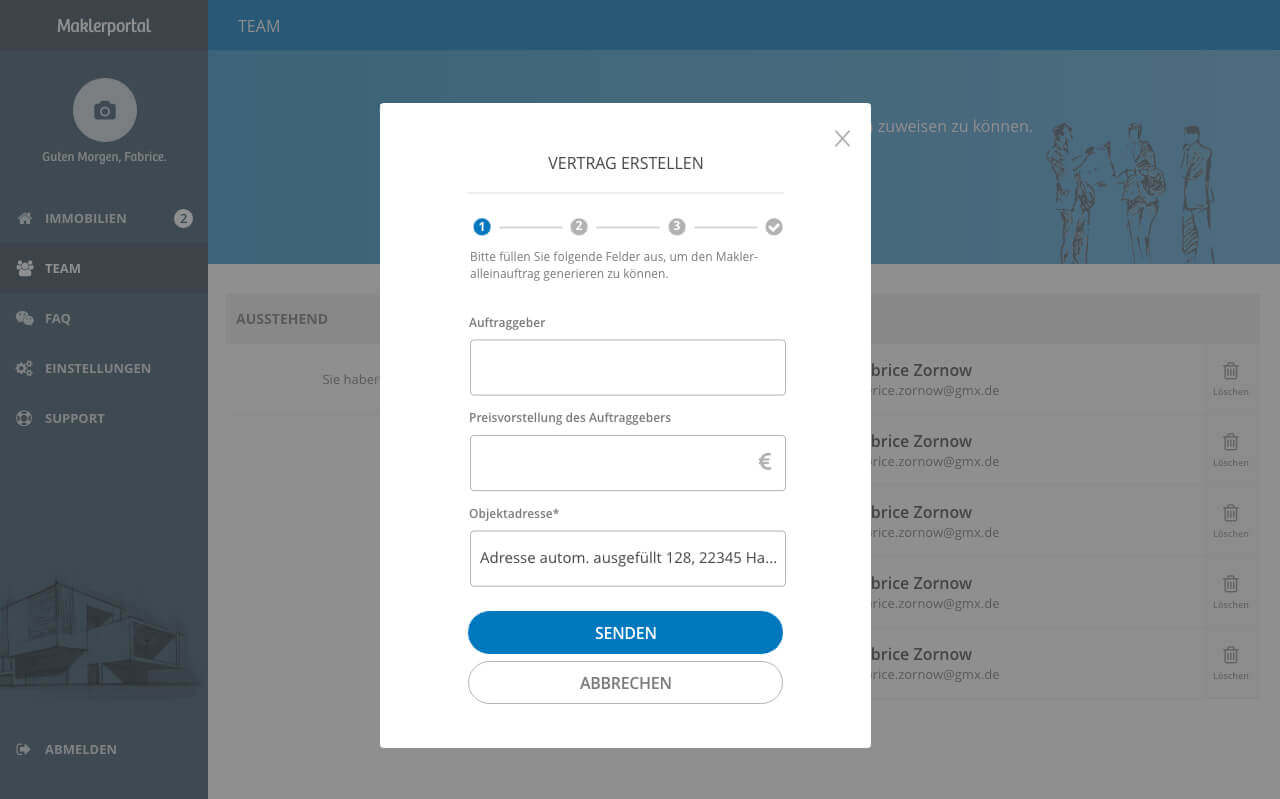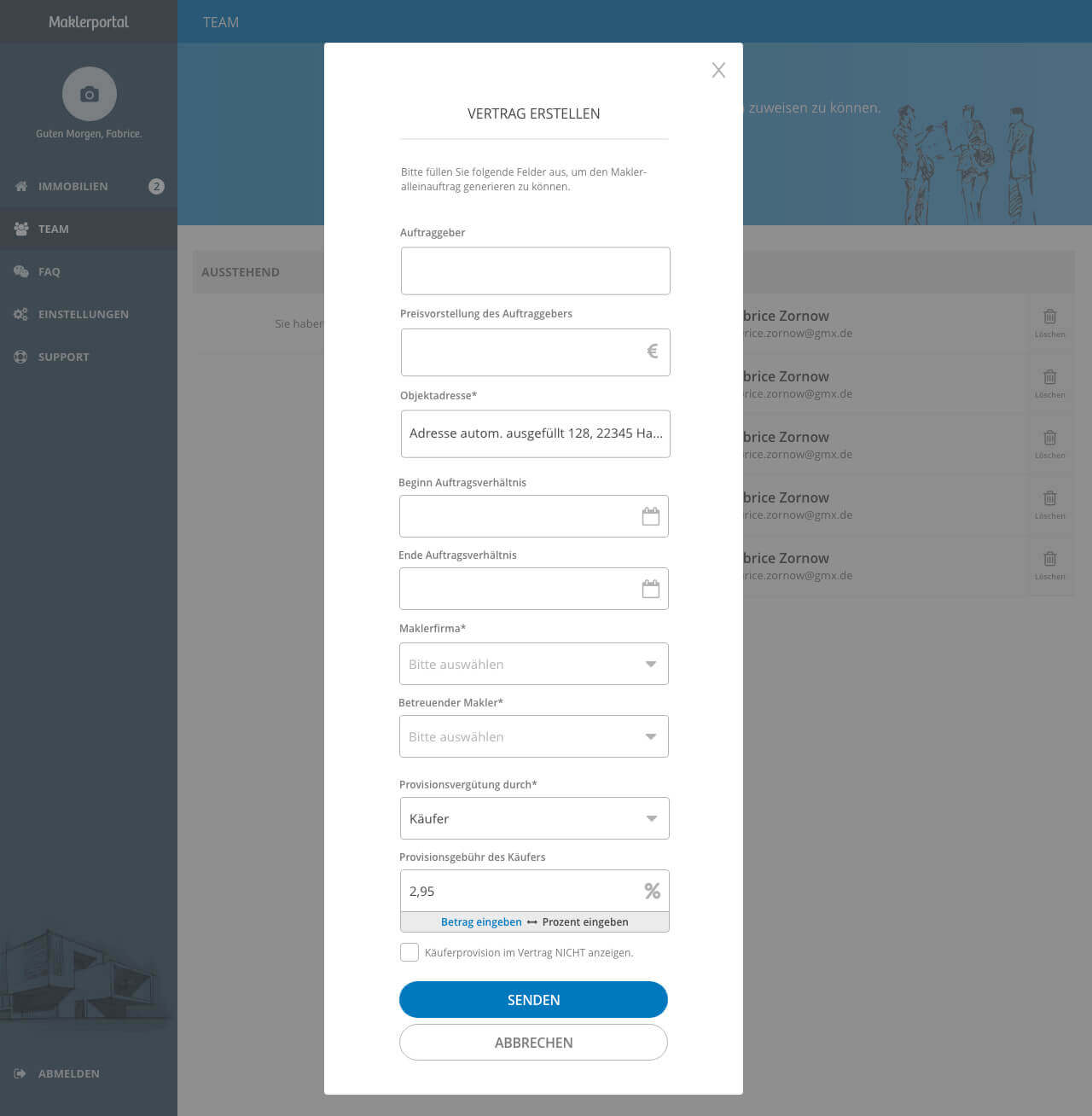How to make your user’s life easier with Hick’s Law
A good user experience is accomplished by satisfying the user’s needs as quickly as possible. Therefore you should aim for a minimal cognitive load or in other words: less is faster!
What is Hick’s Law?
Back in 1952 the two psychologists Willian Edmund Hick and Ray Hyman have drawn up Hick’s Law which describes the time it takes for a person to make a decision depending on the choices available to him or her. When the number of choices increases, the time for making the decision increases logarithmically.
Why is it important to decrease response time?
When response time is critical or the decision is hard to make we easily get stressed which leads to cognitive overload. What is this? The cognitive load refers to the total amount of information that your working memory can handle. If the working memory receives too much information, it can’t handle them comfortably anymore. This state leads to frustration and comprised decision-making and is called „Cognitive overload“.
While experiencing cognitive overload, it gets even harder to think straight forward and choose an option. The user get caught in a vicious circle which results in high churn rates. The NN Group wrote a great article about that topic - „Minimize Cognitive Load to Maximize Usability“.
It is obvious that high churn rates are not the only negative result from cognitive overload but a bad user experience as well. This is where Hick’s Law comes into play because decreasing the amount of options automatically results in a fast decision making and a low cognitive load.
How can you use it for building your product?
Due to the use situation, Hicks Law can help you building better products that are especially used on smartphones or other mobile devices. Nowadays we want everything to be completed in as little time as possible. That’s why you can use Hick’s Law nearly everywhere where your user needs to choose from a large amount of options like in lists.

Let’s put our hands on a real example: Have you ever ordered your groceries online? I recently wanted to test amazon fresh and searched for „bread“. BOOM - 1,000+ results! Amazing, right? Well, if you don’t know exactly what you are looking for, you’ll easily find yourself spending 15 minutes and more to find the right bread. That is quite a long time considering that 30 years ago, this choice would have taken you just a couple of seconds because options have been limited: Plain white bread or whole grain loaf. This phenomenon is called „paradox of choice“: The more choices you have, the longer you take to make a choice and the more likely you’ll experience information overload.

How Hick’s Law improved our product
At HAUSGOLD we face a similar problem because every property needs to contain lots of property details but not every information is needed in every part of the sales process. In order to keep the cognitive load at bay, we introduced situation specific modals to provide the real estate agent only with the relevant resources in each step:
The so called „wizards“ always appear when the user wants to create a specific document such as a sale contract. Typically, contracts include information like the client’s name, the retail price and the commission conditions. Not included is the whole bunch of property details that have been necessary for marketing the real estate properly. That’s why the estate agent is only asked to fill in the required information.
As the sale contract is the most important document while selling a property, things easily get difficult. With aim of minimizing the completion time, we not only decided to discard non-essential information but also to structure them as effectively as possible. According to Hick’s Law we sorted the fields by category, so the user is confronted with max. 4 fields at a time.


Here’s how we benefit from Hick’s Law:
- Avoid the feeling of being overwhelmed (as a user)
- Optimize content for scan reading
- Minimize completion time
- Decrease cognitive load
Conclusion
Everybody loves to spent as little time with decisions as possible. For people who care about a great user experience, Hick’s Law is an amazing tool to reduce the amount of time a user needs to get his things done.

Comments
Leave a Reply
Your email address will not be published. Required fields are marked